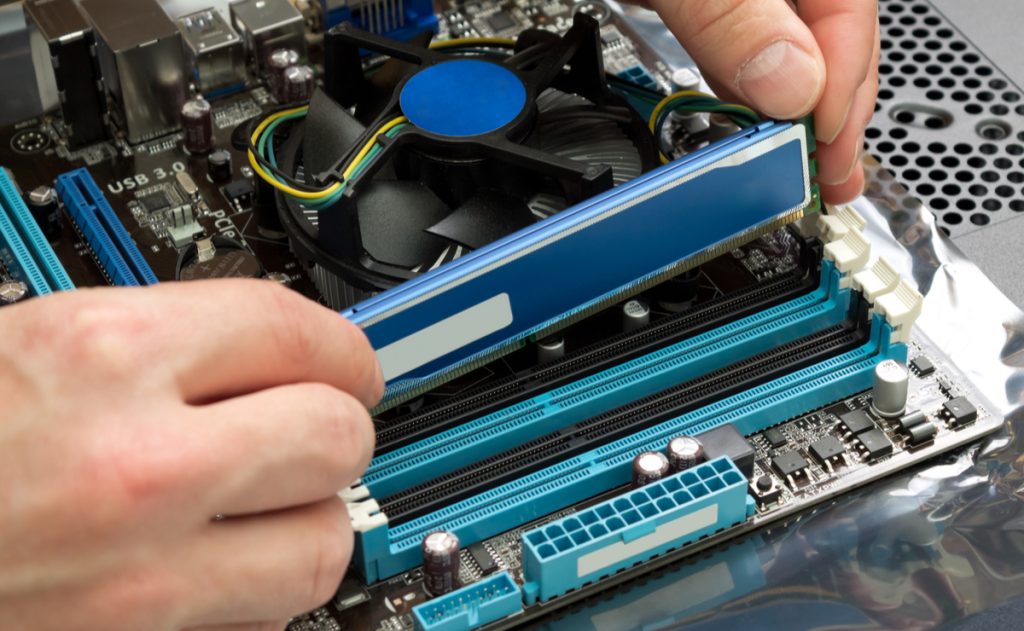Contemporary business conditions have been changing rapidly, driving information technology (IT) demands and expectations to new heights. Enterprises are not just asking for performance but extreme performance, that too, at scale. IT delivery models, conventional application architectures and infrastructures, and storage and compute organizations have all been developing at a rapid pace in reaction to these industry demands.
In this evolution, a recent vector is in-memory computing (IMC) that is an important technology alternative to conventional performance and scale-enabling tactics.
As businesses manage with an outburst of data and consumers expect real-time insights, they have rolled toward IMC solutions.
There was a time when real-time was in demand, but today’s businesses want answers at the speed of thought. And that is obvious, who does not want that? For this reason, IMC has become the new go-to technology for analytics.
The recent business view clearly indicates a robust trend for the adoption of IMC. Consequently, IMC is becoming the major infrastructure component for increasing the number of enterprises. Thus, allowing enterprises to store their information in memory for maximum performance.
IMC is exclusively used across various applications, from e-commerce and fintech to the internet of things (IoT) and telecommunications. Thus, companies across the globe prefer IMC solutions to analyze and process huge amounts of data in real-time.
As there is a drop in the price of system memory by about 30% every 12 months, IMC has become the priority for a range of workloads across all enterprises. This is because it can offer a lower TCO (total cost of ownership) for data processing systems while offering an unequaled performance benefit.
What is IMC?
IMC is a type of middleware software that enables one to store data in RAM across a cluster of computers and processes it in parallel. RAM is roughly 5,000 times faster than the traditional spinning disk. By storing data in RAM and processing it simultaneously, it supplies real-time insights that allow businesses to deliver immediate actions and responses. The results are really, really, fast! One can’t even imagine. This makes it ideal for implementation in analytical and transactional applications. Parallel distributed and RAM storage processing are two important pillars of IMC.
As per a Gartner report, “The digitalization of business generates an inexhaustible demand for faster performance, greater scalability and deeper real-time insight, which is boosting innovation around IMC technologies.”
At present, IMC supports several data-intensive applications in various industries. For instance, financial services organizations face various challenges from the tsunami of information produced by 24-hour mobile banking. To increase the speed and accuracy of calculations, a financial organization uses in-memory computing.
Why in-memory computing matters?
Because IMC is all about how much data can be ingested and analyzed, and how fast the analysis can be performed. IMC can speed up data processing by eliminating the need to move data from disk to random-access memory (RAM) before processing, which can reduce query times by 1,000x or more. Moreover, IMC has advanced because traditional solutions, typically based on disk storage and relational databases using SQL query language, are insufficient for today’s business intelligence (BI) needs. Also, to maintain a competitive edge and meet today’s demands for optimal consumer experience – IMC matters!
IMC is based on two key principles:
1. The way data is stored and scalability
2. Process or network to handle constantly increasing amount of data (real-time insights)
This is achieved by leveraging two major technologies: parallelization and RAM.
Huge range of use cases in IMC:
- Telco and utilities
- Retail
- Transportation
- Financial services
- Insurance
- Complex event processing of streaming sensor data
- Real-time ad platforms
- Real-time machine learning (ML)
- Geospatial/GIS processing
- Natural language processing and cognitive computing
- Hyper-local advertising
In-memory computing – the next computing frontier
IMC is also termed as memory-centric architecture or near-memory computing. Earlier, IMC mainly concentrated on platforms that allowed space-based architecture, distributed caches, and in-memory data grids. But in the past few years, the IMC space has experienced dramatic alterations. It has earned enormous traction from the research community and industry.
Key software manufacturers, including application software and platform providers, are now deeply entrenched within IMC in one way or the other. For instance, Microsoft recently announced Hekaton, a project code name for SQL Server in-memory OLTP; SAP has come up with an in-memory analytical database called HANA; Oracle provides in-memory RDBMS called TimesTen database and Distributed Cache called Coherence, and TIBCO has ActiveSpaces, which is an in-memory data grid.
As per a Cybage report, “From fragile and expensive point solutions for niche use cases to robust and highly affordable alternates, memory-centric architecture stacks have evolved radically. Simpler architectures, extensive scalability and massive and predictable performance are direct benefits of IMC stacks.”
In-memory platforms will not only offer the main capabilities that consumers expect, such as strong SQL support, but will also address the needs of emerging use cases such as non-volatile memory, internet-of-things (IoT), hybrid transactional/analytical processing (HTAP), and machine learning (ML).
There are many forms of memory-centric architecture ranging from in-memory data caches on a single server to in-memory databases (IMDBs), comprehensive in-memory computing platforms (IMCPs), and in-memory data grids (IMDGs).
Factors affecting IMC adoption
- High performance is essential for companies functioning in the cyberspace. Even the slightest invisibility may lead to loss of consumer or revenue.
- Conventional disk-based systems are not proficient in swallowing high-velocity big data because of constraints with mechanical disks.
The world is getting a clear idea regarding what exactly in-memory actually does and how it is beneficial for your business, but the question remains, “Is IMC ready for the mainstream?”
IMC helps businesses to resolve the increasing challenges of managing access to big data. Thus, big data provides immense likelihood for businesses by accessing data that is lost in the database somewhere.
The use of IMC in enterprises not only helps to advance the pace of access but storing a huge amount of big data in RAM that has been unimaginable until now. Now with the help of Software AG’s Terracotta In-Memory Data Management platform, industries may store big data in memory where several users can rapidly recover it through multiple applications.
Software AG’s IMC technology allows you to:
- Accelerate time-to-insight, understanding consumer trends as they happen, and mitigating fast-breaking risks.
- Produce huge data sets that are instantaneously available in ultra-fast RAM distributed across any size server array.
- Analyze, collect, and sort data faster than the competition.
- Effortlessly scale to multiple terabytes of heterogeneous data in-memory, with assured latency of low milliseconds.
- The advantage of real-time data flows from any device.
- Accelerate application performance with quicker access to big data.
The hybrid transactional and analytical processing (HTAP) use case:
For any organization, the application of IMC enables for much enhanced and broader HTAP use cases. This can be implemented in transactional analytics guided by real-time analytics and in transactional and analytical applications sharing the same data infrastructure.
For instance, near-memory computing renders hybrid transactional analytical processing (HTAP) cost-effective. HTAP is the capability to manage transactions and operate analytics on a similar database. HTAP can be extremely beneficial for functions where real-time judgments are based on the incoming data, for example routing automatic cars or examining industrial equipment.
IMC components:
- Broad set of integrations
- In-memory data grid
- Persistent store
- In-memory compute grid
- In-memory Apache Hadoop acceleration
- Distributed SQL
- In-memory streaming and continuous event processing
- In-memory service grid
The future of IMC
In the forecast period, IMC will see various transformative developments such as:
- Hybrid storage models for very large datasets.
- Near-memory computing as a system of record.
- Non-volatile memory (NVM) as the preferred storage method.
- Robust support for in-memory, distributed SQL.
- Artificial intelligence (AI).
The truth with IMC is, if this is the way of the future, you can’t wait. The main purpose behind the development of technology is to solve issues related to insight, speed, and scale. It plays an important role in financial industries where the difference between losing and making millions can be a matter of seconds. And it is a Godsend for running intelligence reports that would have taken hours or days to process before.
After reading the entire story, one can say that IMC has begun to unleash a wave of innovation that’s not built on big data, instead on “big ideas.”
SUM up…
IMC is the key buzzword in companies today. This is because it is transforming information analysis by massively speeding-up scaling and computing to everlasting quantities of data.













